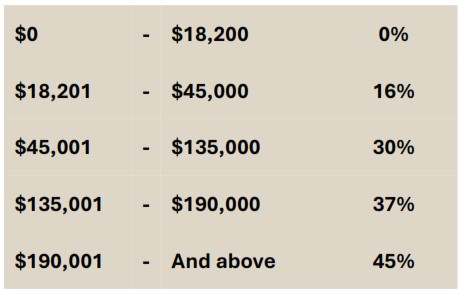Millions of Australians have (or are about to) receive their first pay packet for the 2024-25 financial year, and it should contain some extra cash. Thanks to the federal government’s “Stage 3” changes to individual tax rates and thresholds, all 13.6 million Australian taxpayers will benefit from income tax cuts that started on 1 July 2024. Most taxpayers will see these cuts reflected in their net pay immediately, while others will receive them when their tax return is processed after the financial year ends.
The new tax rates are as follows:

For example, a person earning $90,000 per annum who previously paid $21,517 in income tax (including the 2% Medicare levy) will receive an annual tax cut of $1,929 in 2024-25.
This equates to just over $37 per week or $160.75 per month in extra cash.
Additionally, the compulsory Superannuation Guarantee levy has increased by 0.5% to 11.5% per annum. So everyone is also seeing an increase to the amount of super being contributed toward their retirement savings.
While cost of living pressures are a concern for many Australians, those who don’t necessarily need the extra cash for day-to-day expenses might consider investing it as part of a regular investing strategy.
Regular investing, also known as dollar-cost averaging, involves setting up a plan to invest a fixed amount of money at regular intervals. This strategy helps to average out the total cost of investing and can lead to compounding investment returns over the long term.
One way to implement this strategy is by setting up an automatic transfer to your investment or savings account each payday. This “set-and-forget” system ensures that you consistently invest without having to make decisions about saving or spending each month. Many of the investment platform offer an “Auto Invest” feature, allowing investors to make regular investments from a linked bank account into exchange traded funds (ETFs) and managed funds.
Regular investing, combined with dollar-cost averaging, is a great way to achieve your investment goals. By maintaining a disciplined, non-emotional approach to investing, you can focus on building a diversified portfolio that gives you the best chance of long-term success.
Remember, any investment carries risks, and it’s important to consider your financial situation and seek professional advice before making any investment decisions.


